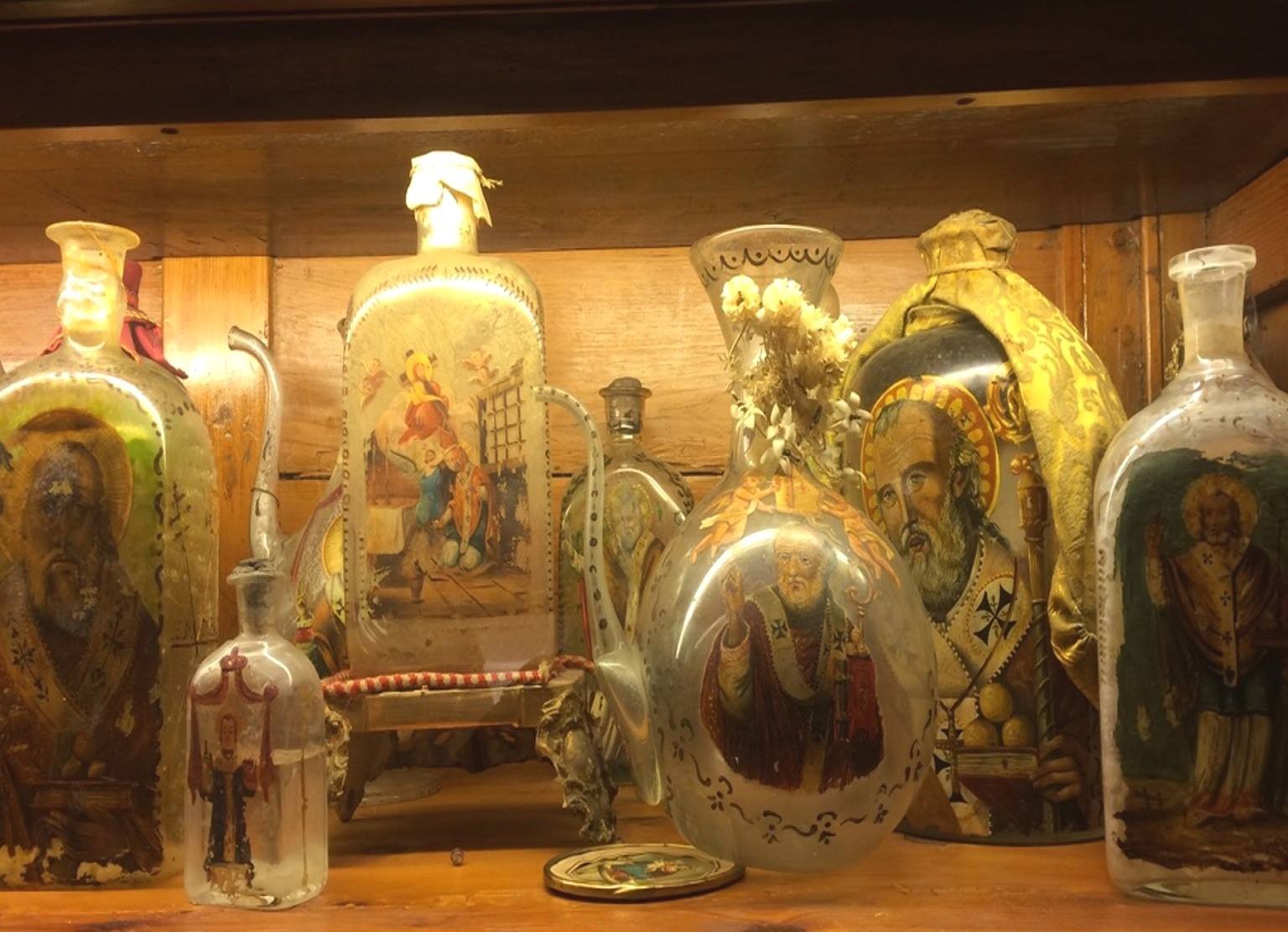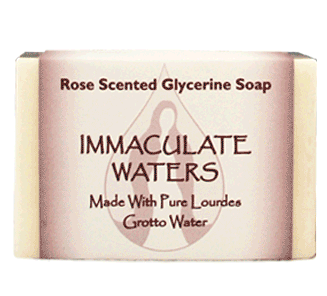From Forums of the Virgin Mary [for cautious discernment]:
Catholic Healing Oils: what they are, how to obtain them, how to prepare them.
Welcome dear brothers!
To those who follow the work of this team daily and to those who are joining now:
Today we want to talk about the long Catholic tradition of healing oils.
In Mark 6, it is recorded that Jesus asked the Apostles to use oil to perform miraculous healings.
Jesus called the twelve and began to send them out two by two to preach the Gospel and to heal, and gave them authority over unclean spirits.
The healing was through the application of oil; as narrated in the Gospel of Mark 6:13, “they anointed with oil many who were sick and healed them,” it says.
From there comes the tradition of healing oils.
Here we will talk about the different types of healing oils that exist in the Catholic tradition, how they actually heal, where to get them, and how you can even prepare them. [Be discerning.]

These oils are sacramentals that have performed many allegedly miraculous cures throughout the centuries.
They are often collected from the tombs of saints or created by placing a first-class relic inside a vat of oil or in front of an image of a saint.
And there are also oils created with ingredients from nature, which have been recommended in private revelations for healing.
And there are the institutional oils of the Church, for example those blessed by the bishops on Holy Thursday: the Holy Chrism, the Oil of Catechumens, and the Oil of the Sick.
But it is essential to keep in mind that it is not the oil that heals, but the Power of God through the intercession of the Church or a saint.
The same thing happens with the water that flows from the fountain at Lourdes or in other places of apparitions.
They are credited with great healing powers, but it is not the water itself that heals; rather, the Virgin has arranged these fountains to bring graces to those who come to them with faith.
There are a variety of traditional Catholic oils associated with saints, with strong evidence of healing properties.
There is the famous oil of Saint Nicholas, the saint who started the tradition of Santa Claus.
His relics are located in Bari, Italy.
[scroll for more:]
And from his tomb drips an oil that is collected every year on May 9 and distributed among the faithful.
Sometimes called “manna,” it has been collected, mixed with Holy Water, bottled in small glass jars decorated with icons of the saint, and given to the faithful for hundreds of years.
Something similar happens with Saint Walburga Oil.
For a thousand years, a mysterious moisture has accumulated each year on the relics of Saint Walburga in the abbey in Germany where they rest.
This Walburga oil is considered a sign of her continued intercession.
It is collected and given to pilgrims.
And the healings attributed to the intercession of Saint Walburga are numerous.
Another is the oil painting of Saint Therese of Lisieux.
The first-class relics of Saint Therese of Lisieux are immersed in a vat of rose oil, while intercessory prayers are said over her.
This oil has been distributed throughout the world and has been a source of miracles.
There is also Santa Ana Oil.
This comes from a lamp that burns in front of the tomb of Saint Anne.
The oil is blessed by a priest and then distributed throughout the world. Many claim miraculous healings through it.
Another is the oil of Saint Charbel that exudes from his tomb in Lebanon. There have been many miracles attributed to the saint’s intercession.
We also have Santa Filomena Oil.
On August 10, the oil is blessed by the local bishop at the Sanctuary of Saint Philomena in Italy, where her body rests.
The oil is near her relics is blessed and then distributed to pilgrims.
This sacramental of Saint Philomena has a long history of interceding for desperate cases.
And in the garden of the Garden of Olives, in the Holy Land, guarded by the Franciscan friars, they give a small flask of oil, like a sacramental for healing, produced by those same trees that saw Christ sweat Blood,
And in that tradition we have the oil that was made popular by the work that Saint André Bessette did in Quebec, with Saint Joseph’s oil.
This humble doorman of a Canadian congregation is considered the one who has achieved the most miracles through the intercession of Saint Joseph in any era.
The oil came into his hands through a private revelation from Saint Joseph.
The image of Saint Joseph had near it some small oil lamps, and when these were about to run out, Saint André would put the oil in a larger container and refill the lamp. Then he would bottle the oil in small bottles and consecrate them to Saint Joseph by placing them under the altar of Saint Joseph, asking for his intercession.
And then he distributed them among the sick.
And we also have oils that use ingredients from nature.
One is the oil of San Rafael, which consists of boiling ¼ liter of oil with 30 petals and a whole rose.
The Creed must be prayed, the Gloria three times, and the following prayer: “O Mother of God, Mary Mystical Rose! Grant me, together with the Archangel Saint Raphael, the angel of God’s healing, the grace to feel deep sorrow for my sins and to implore God to grant me divine help for my current illness.”
Another popular oil is the one also called Saint Joseph oil by Brother Augustine of the Divine Heart, which is produced by placing seven roses, lilies, or irises and the oil in front of the altar of the holy Patriarch Saint Joseph.
After seven days, the petals are boiled with the oil for seven minutes.
It is recommended to pray the crown of seven joys to Saint Joseph when wearing it and also to consecrate oneself to the holy patriarch.
During the time of Covid 19, the “Good Samaritan Oil” also became popular.
It is said to improve the immune system and protect against infections such as flu and viruses.
It is sometimes called “Oil of Thieves” because it is associated with the legend of four thieves who stole the bodies of victims of the bubonic plague but managed to escape infection by using this oil.
Its ingredients are a base oil, which can be olive, almond, coconut, or other, and five essential oils: lemon, rosemary, cinnamon, eucalyptus, and clove.
And by applying all this rich tradition of healing oils, you too can create a sacramental oil.
Use an oil lamp or a so-called infinite candle, fueled by olive oil, which reminds us of Jesus’ bitter Passion in the Garden of Gethsemane.
Place the lamp in front of an altar of Jesus in the garden, or the Virgin, or Saint Joseph, or any devotion you wish, and light it.
Then you pour the oil into a small bottle and take it to be blessed by a priest, if you find one available.
Because it is also a resource to use in times of persecution and closure of churches.
And you will use this oil for healing and blessings.
Well, this is what we wanted to tell you about the healing oils that exist in the Catholic tradition.
And we at Forums in Peru would like to ask you if you have used any of them and if you know any more than those we have mentioned.
[resources: soap made from water at Lourdes]
